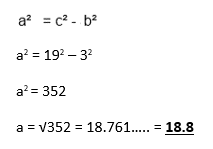Table of Contents
Unit 1 | Algebra
Page 1 | Expressions and Formulae
Page 3| Solving Linear Equations
Page 4| Expanding and Factorising
Page 5| Factorising Quadratics and expanding double brackets
Page 6| Patterns and Sequences
Page 7| Simultaneous Equations
Page 8| Changing the subject of a Formula
Page 9| Adding , subtracting algebraic formulas
Unit 2 |Graphs
Page 1 | Straight line graphs
Page 2 | Graphs of Quadratic functions
Unit 3 |Geometry and Measure
Page 2 | Symmetry
Page 3 | Coordinates
Page 4 | Perimeter, Area, Volume
Page 6 | Measurement
Page 7 | Trigonometry
Page 8 | Pythagoras
Page 9 | Angles
Page 10 | Shapes
Page 11| Time
Page 12 | Locus
Unit 4 | Numbers
Page 1 | Speed, Distance and time
Page 2 | Rounding and estimating
Page 3 | Ratio and proportion
Page 4 | Factors, Multiples and primes
Page 5 | Powers and roots
Page 7 | Positive and negative numbers
Page 8 | Basic operations
Page 9 | Fractions
Page 10 | Percentages
Unit 5 | Statistics and Probability
Page 1 | Sampling data (MA)
Page 2 | Recording and representing data
Page 3 | Mean median range and mode
Page 4 | Standard deviation
Unit 4 | Calculus
Pythagoras’ Theorem
L.O To find the length of an unknown side using Pythagoras
This is the method of finding the length of different sides in a right angled triangle.
Firstly, you should be comfortable with labelling the: adjacent, opposite and hypotenuse of any right angle triangle, we will cover this more on the Trigonometry section.
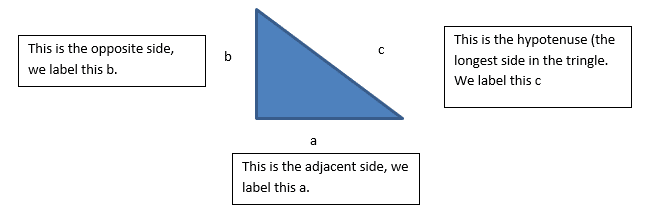
All you have to do is follow one simple rule:

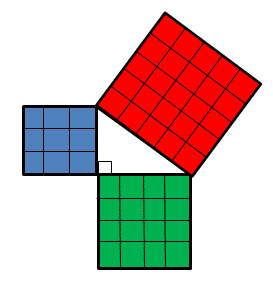
Let’s try an example:
Here we have a right angle triangle with side lengths of 3cm,4cm and 5cm.
Pythagoras’ Theorem uses the square of the length of each side.
Now if we look at the areas of each square:
The area of the square on the side length of 3cm is 9cm
The area of the square on the side length of 4cm is 16cm
The area of the square on the side length of 5cm (the hypotenuse) is 25cm
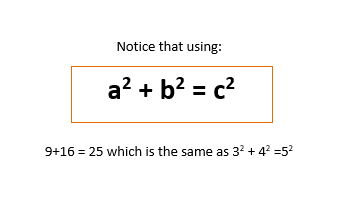
Example 1:
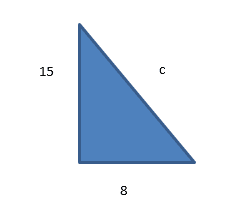
Work out the length of the hypotenuse of this triangle
Always state Pythagoras’ Theorem first

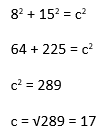
![]()
![]()

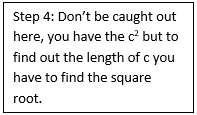
Example 2:
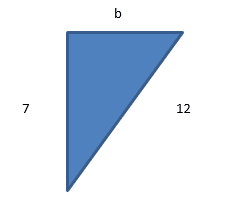
Work out the length of the Opposite side of this triangle to 3 s.f
Now we have to rearrange Pythagoras’ Theorem
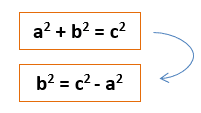
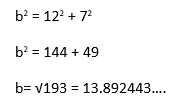

![]()
![]()
![]()
However the question asks the answer to 3 significant figures so make sure your answer is 13.9
Example 3:
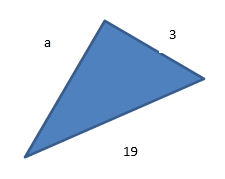
Work out the length of the adjacent side to 3 s.f.
Step 1: Rearrange in the same way as you did in the example above but this time subtract b2.
